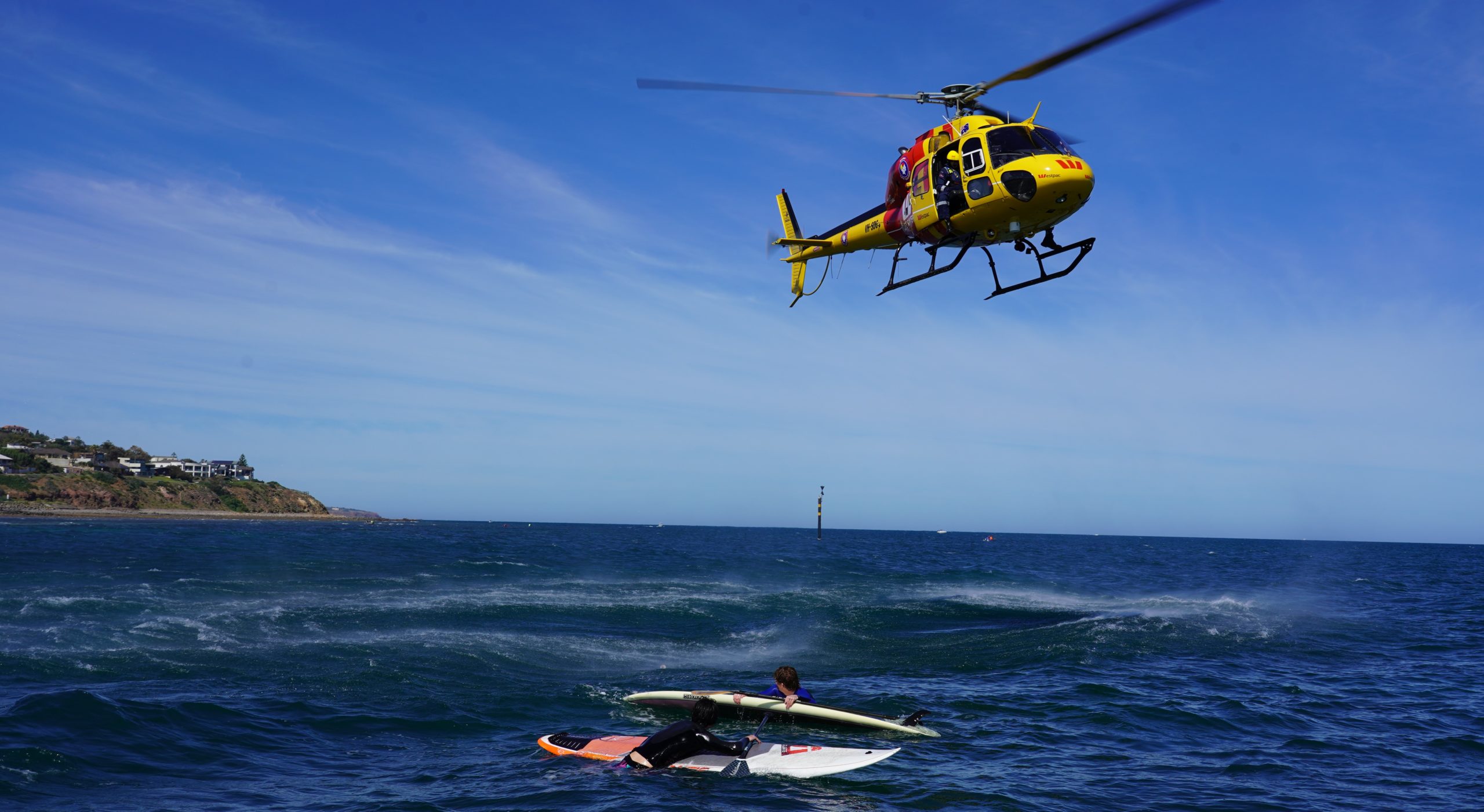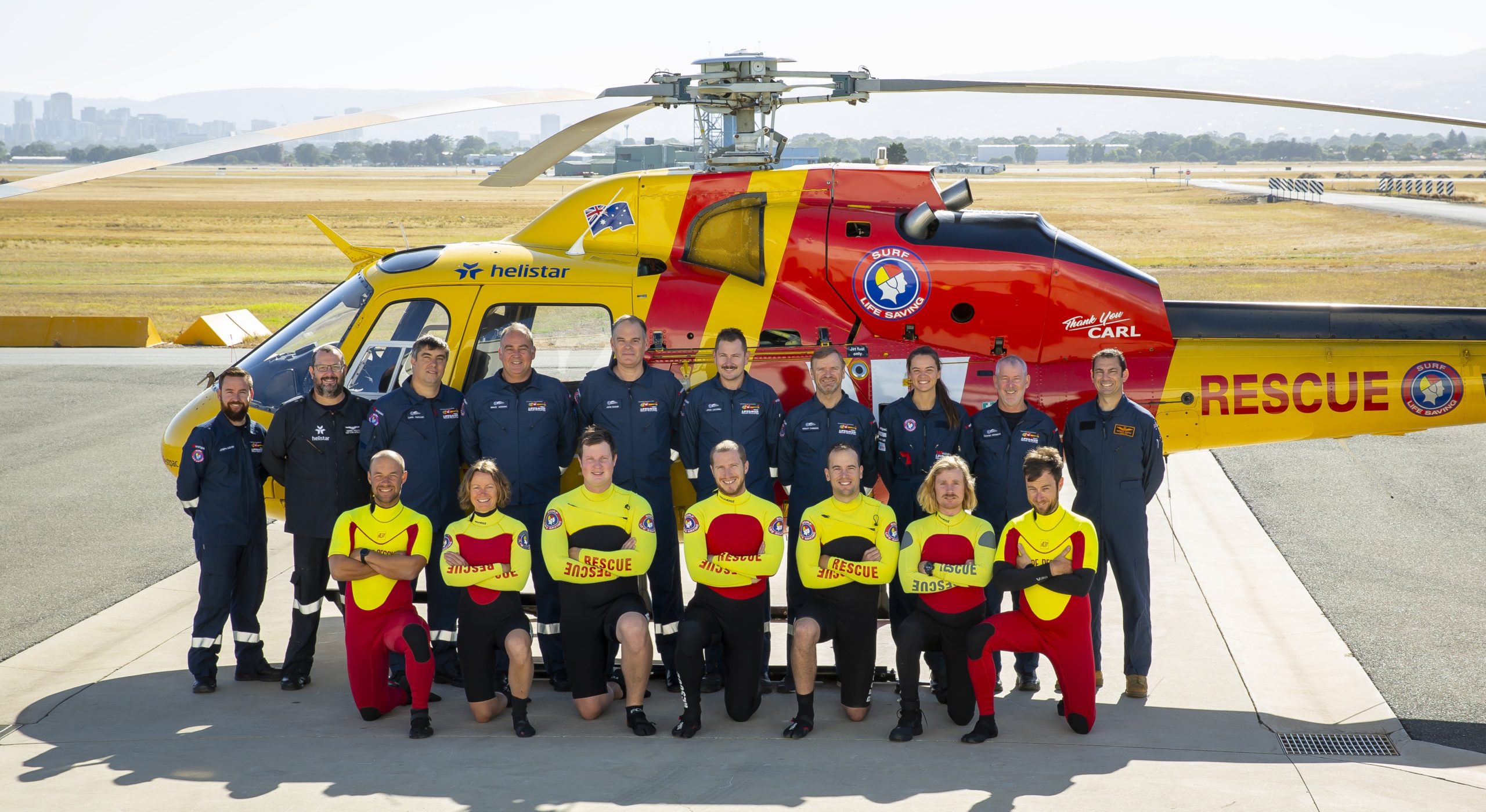Crewing with helicopter rescue for 43 years

Established in New South Wales in the mid-1970s, the Westpac Lifesaver Rescue Helicopter Service has been serving the Australian community for nearly half a century.
The SA chapter first took to the skies over the Adelaide and Fleurieu coasts in the summer of 1979-80, as part of Surf Life Saving South Australia.
Crew member Geoff Brennecke has been on board since day one, and this year he was inducted into the Surf Life Saving SA Hall of Fame. So, what led him to spend more than two thirds of his life helping keep our coastal waters safe?
“Some of my mates from high school were members of the West Beach Lifesaving Club, and I used to surf down there with them,” Geoff says. “I noticed the club had lots of great equipment – and hot showers – so it seemed like a good idea to join up.”
“When I heard talk of helicopter rescue starting in Adelaide, it seemed like something new and exciting that hadn’t been done before in SA,” he says. “It was an excellent opportunity.”
Qualification required a Surf Life Saving bronze medallion, plus advanced resuscitation and first-aid certificates. Applicants needed to complete a 1.6km run in under seven minutes and a 400m swim in under eight minutes.
Training also included picking up patients from the surf using a static line attached to the helicopter and carrying them safely back to shore.

“When I found out the types of incidents I might have to deal with, I felt the need to upskill,” Geoff says.
“One of the crew was a St John Ambulance Brigade member, in the days when volunteers worked in the metro ambulances.
“He encouraged me to join up and after completing the training, I spent nine years as an ambulance officer, six of which involved advanced care, using defibrillators and administering a range of medications.”
What’s the most enjoyable aspect of helicopter rescue?
“It’s definitely the people you work with,” Geoff explains. “Everyone has different skill sets and experiences.
“Between the pilot and the two crew we can pretty much work out any problem.”

Though, sometimes the decision-making process can be tricky.
“We once spotted a shark between swimmers on a sandbar and the shore,” Geoff says.
“We knew if we hit the shark siren, they could paddle straight into its path while leaving the water.
“But if we didn’t use the siren, it could turn out even worse, so between the three of us we decided to turn it on, and fortunately everyone got to the beach safely.”
Bronze whalers are generally non-aggressive and are among the most common sharks along the metro and south coasts. But it isn’t always possible to clearly identify the different species.
“Sometimes bronze whalers are a really bronzy colour, so you can pick them straight away, but the bigger, older ones can be a bit darker, so we’re not always sure,” Geoff says.
“But when we see a shark around five or six metres long, then we know it’s a great white.”
Of course, there’s much more to the job than keeping swimmers and sharks apart. Some of the work involves coordinating rescues from capsized or broken down boats. There’s nothing better than having an eye in the sky.
“On one occasion we spotted a man wearing a life jacket and paddling a boogie board a couple of kilometres offshore,” Geoff says.
“We looked further out to sea and noticed a broken-down jet ski with three people clinging to it but only one wearing a life jacket.
“The chap on the boogie board was apparently heading in to raise the alarm.
“By radio we organised a team from the Aldinga Lifesaving Club to launch their inflatable boat and rescue the three on the jet ski and recover their craft, but when we returned to find the other chap, we discovered he’d already made it to shore.”
If you’re keen to get involved in Surf Life Saving, Geoff has nothing but encouragement.
“Lifesaving’s fantastic – it doesn’t matter what age you are,” Geoff says.
“There’s the Surf Babies program for ages one to five. They can then become nippers and develop skills that will be valuable for the rest of their lives – as well as having lots of fun and making new friends.
“Then it’s on to juniors and seniors, and maybe even competitions in beach and surf events at local and interstate carnivals.”
Geoff is testament to the philosophy of getting the most out of Surf Life Saving. Over the years he’s been a surf boat rower, and qualified as an Inflatable Rescue Boat (IRB) driver and a Jet Rescue Boat driver.
At 61, he still thinks he’s got a couple of years left in the Westpac Lifesaver Rescue Helicopter Service before he hangs up his flight suit.
During the 2021-22 season, South Australian Surf Life Saving volunteers performed more than 80,000 patrol hours, 127 rescues, 616 first-aid treatments and 17,603 preventative actions.

